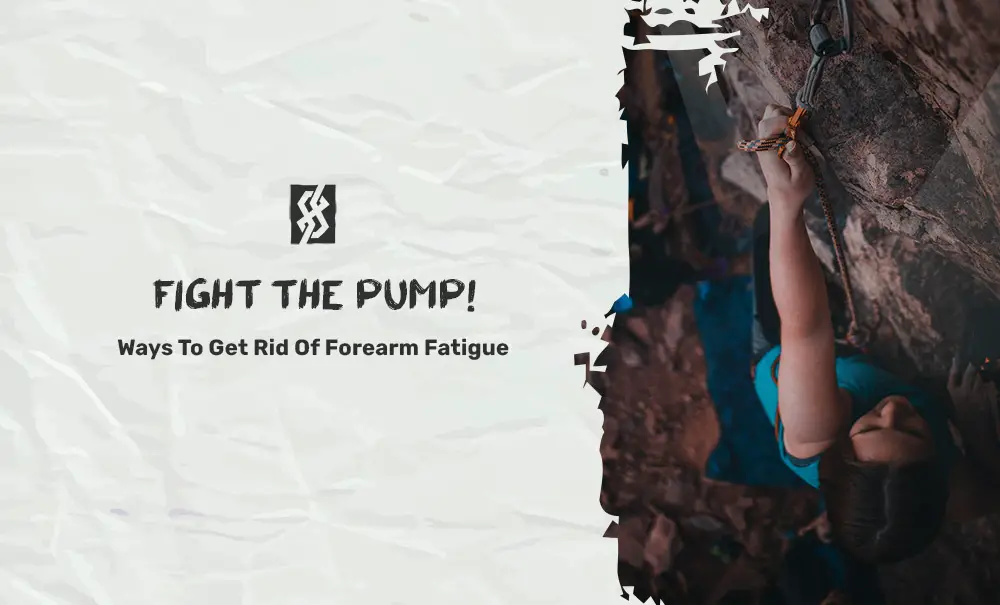Unless you are Seb Bouin who apparently never gets pumped, you have definitely felt the dreaded forearm pump at some point, if not every single time you go climbing. The story of the forearm pump has been felt since the dawn of rock climbing. Climbers have forever witnessed the feeling of weakness, stiff arms, and the inability to hold even their water bottle.
Forget about untying your figure of eight knot. You’ll be lucky if you’re able to take off your shoes too.
At first, it might seem like all hope is lost for the day. No more climbing, the pump has once again won. If you stick around a little longer though, and give yourself some time to rest, you’ll be surprised at how long you can keep climbing.
A couple of stretches and exercises will get you back on the wall in no time, you’ll be able to get rid of the arm pump fast and send that route that put you down at the beginning of the day!
What Is A Rock Climber Forearm Pump?
Do you have sore forearms after climbing? The pump of rock climber forearms refers to a phenomenon when your muscles basically contract really hard and restrict blood flow. As a result of this constriction, you’re muscles are no longer irrigated accordingly, and swelling starts to occur.
Now, with this piece of information, we’ll try to explain this flash pump using science.
So, when you flex your muscles and they contract to a high degree, as said earlier, they constrict the veins and keep the blood from irrigating properly. More than that, when your muscles contract more than 50%, they restrict blood flow completely.
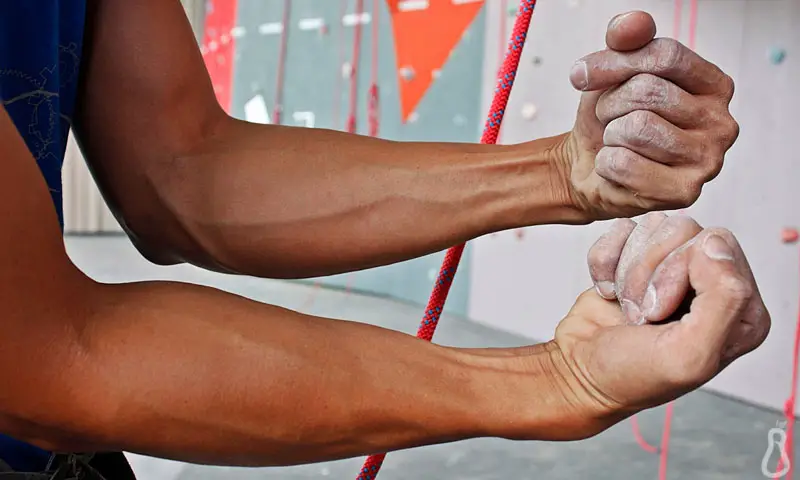
What happens when the muscles don’t get sufficient blood or no blood at all? Well, they start feeling fatigued because they don’t receive ATP – the energy necessary for muscle contraction, as well as oxygen and glucose, which are the fuel for muscle movement. Without proper fuel, your muscles cannot contract, and you start experiencing the pump.
This process happens quite fast, and some climbers call it flash pump because, after a couple of hard moves, your arms will already triple in size and your hope for finishing the route will decline fast.
Forearm pump can happen with most sports, but rock climbing is the one where all participants will experience this at some point if not every time they go climbing (like me!).
So how can this be prevented? Is there any hope for reducing the pump? Of course! A flash pump will disappear once the blood flow is restored to your muscles. It sounds pretty easy, and with a couple of exercises and routines, it really is!
Why Are My Forearms Sore While Climbing?
Most of the climbers will experience sore forearms while climbing or after climbing. Whether we’re talking about the first warmup lines or about your long-lasting boulder project, sore forearms can appear for multiple reasons.
1) Over Gripping
Over-gripping is one of the most common reasons climbers experience forearm pump. When climbers grip the holds too tightly, they exert excessive force which causes the forearm muscles to work harder than necessary. This overuse of the forearm muscles leads to a build-up of lactic acid, which in turn causes the sensation of “pump.”
Beginners often fall into the trap of overgripping due to a lack of confidence or fear of falling. It’s essential to trust your feet and balance, using your grip only as much as necessary. Regularly practicing grip control and focusing on using the least amount of force needed to maintain a hold can help reduce the chances of over-gripping.
2) Bent Arms
Bent arms can also contribute to the forearm pump. When climbers keep their arms bent for extended periods, they are essentially shortening the muscles and restricting blood flow. This position puts continuous tension on the forearm muscles, leading to faster fatigue.
Straightening the arms when possible allows the muscles to relax momentarily and promotes better blood circulation. Climbers should aim to hang from their skeletal structure (straight arms) rather than relying solely on their muscles (bent arms). This not only conserves energy but also reduces the strain on the forearms.
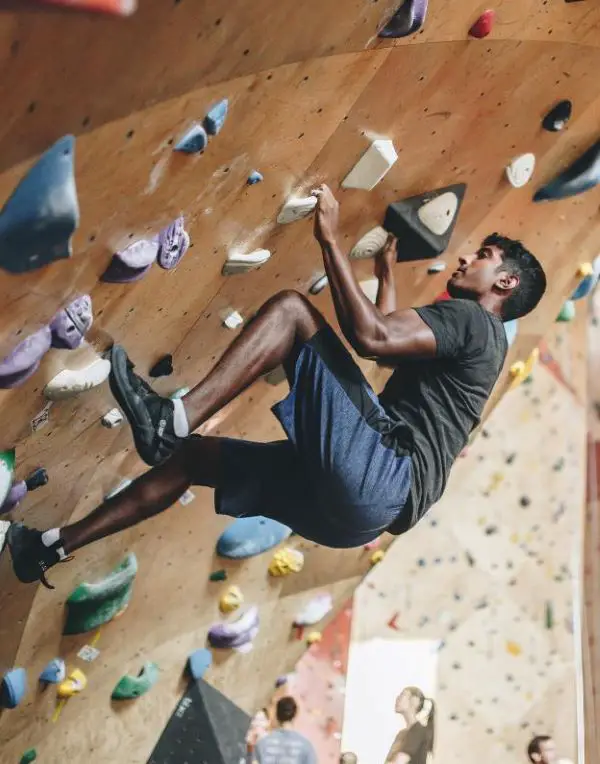
3) Holding Your Breath
Holding Your Breath is a subtle yet significant factor in forearm pump. Breathing is crucial for oxygenating the muscles. When climbers hold their breath, especially during challenging moves, they deprive their muscles of essential oxygen.
This lack of oxygen can accelerate the build-up of lactic acid in the muscles, leading to quicker fatigue. It’s vital for climbers to maintain a steady breathing rhythm, exhaling during exertion and inhaling during moments of rest. Being conscious of one’s breathing pattern and practicing deep, controlled breaths can greatly reduce the onset of forearm pump.
4) Dehydrated
Dehydration plays a significant role in muscle fatigue. When climbers are dehydrated, especially if climbing in warmer climates, their blood volume decreases, making it harder for the blood to circulate and deliver oxygen to the muscles. This reduced circulation can lead to quicker muscle fatigue and cramping.
Additionally, dehydration can thicken the blood, making it harder for the body to flush out waste products like lactic acid from the muscles. Climbers should ensure they are well-hydrated before and during their climbs. Drinking water regularly, even if you don’t feel thirsty, and incorporating electrolyte-rich drinks can help maintain hydration levels and stave off forearm pump.
How To Prevent Sore Forearms While Climbing
1) Warm Up Properly
Starting with a proper warm-up is crucial. Engage in light aerobic exercises to increase your heart rate and get the blood flowing. Follow this with dynamic stretches and easy climbing routes to prepare your muscles for more intense climbs.
2) Use Your Feet
Your legs are stronger than your arms. Using your feet effectively can reduce the load on your forearms. Focus on placing your feet securely and pushing up with your legs rather than pulling up with your arms.
3) Keep A Loose Grip
Avoid over gripping. Keep a relaxed grip and only use as much force as necessary. This conserves energy and reduces unnecessary strain on your forearms.
4) Straighten Your Arms
Whenever possible, straighten your arms to hang from your skeletal structure. This position allows your forearm muscles to relax and promotes better blood circulation.
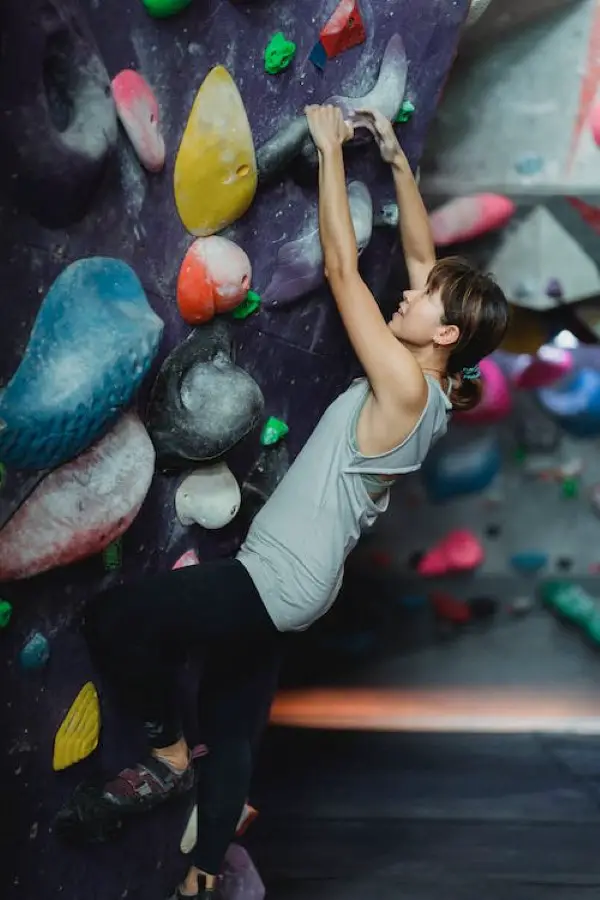
5) Read The Route
Before you start climbing, read the route from the ground. This helps you plan your moves in advance, ensuring you use the most efficient path and techniques, reducing unnecessary strain.
6) Find Good Resting Spots
Identify and utilize good resting spots on the route. Finding good resting spots allows you to shake out your arms, breathe, and recover before continuing.
7) Breathe
Never hold your breath. Breathe steadily and deeply, ensuring your muscles receive the oxygen they need. Exhale during exertion and inhale during moments of rest.
8) Keep Hydrated
Drink water regularly to Keep Hydrated. Proper hydration ensures efficient blood circulation, helping to delay the onset of muscle fatigue.
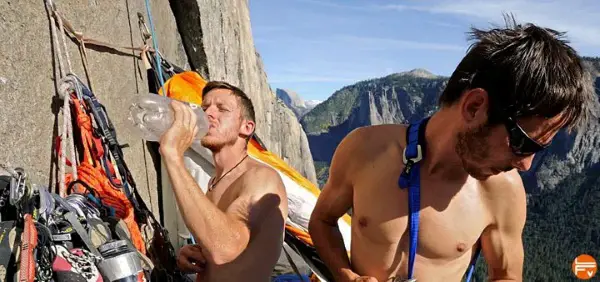
9) Take Rest Days
While it’s beneficial to climb often to condition your muscles, it’s equally important to Take Rest Days. Aim to rest at least once or twice a week to allow your muscles to recover and prevent overuse injuries.
10) Stretch
Post-climbing, engage in Stretching exercises, focusing on your forearms, shoulders, and fingers. This helps in releasing tension and improving flexibility.
11) Keep Magnesium Levels Up
Magnesium plays a role in muscle function. Ensure you Keep Magnesium Levels Up through a balanced diet or supplements to aid muscle recovery and reduce cramping.
12) Find A Knee Bar
Using a Knee Bar, where you wedge your knee between two holds, can provide a hands-free rest position. This allows you to relax your grip and give your arms a brief respite.
13) Massage Your Forearms While On The Wall
When you find a good resting position, use your limbs, like your knee or thigh, to massage your forearms. This helps in releasing tension and improving blood flow. This is a method Sasha DiGuilian uses while she is on the wall.
14) Climb Slow & Controlled
Avoid rushing through the route. Climb slow and controlled to ensure you’re using proper technique and not overexerting your muscles.
15) Shake Your Arms Out
During rests or when you feel the onset of the pump, shake your arms out. Alternating between shaking your left and right arm helps in reducing lactic acid build-up and improves blood flow.
How To Get Rid Of Arm Pump Fast
Once you start feeling the pump you can carry on with your climb but you run the risk of tiring yourself out even more. Once you start feeling the pump the first thing you want to try and do is shake out. You can do this between moves or chalking up, no need to take a proper rest at this stage, unless you are at a good rest spot.
If you feel you physically can’t carry on with your climbing find a good place to rest. To make a full recovery, you want to rest in that position for at least 2 minutes. It sounds like a long time, I know, but if you want to keep climbing, you need to give your muscles time to relax and get that blood pumping through your forearms again.
While resting, make sure you keep your arms straight, not bent. Shake out, massage your forearms on your thighs or knee and get that blood pumping.
Quick Shake vs G-Tox Method: A Deeper Insight
There are tons of pump-fest routes around the world, and even pro climbers experience the flash pump while working on their routes. If you have a case of flash pump climbing, there are two methods that you can try in order to reduce the swell. Most of the climbers rest their arms whenever they find good resting spots with a quick shake; others try the so-called G-Tox Method.
When we shake out our hands, what we’re basically doing is reducing the tension in our muscles as well as forcing blood to run through our constricted veins.
Usually, a quick shake between chalking seems to be a good idea, dangling our arms alternatively when we find a good resting spot on the rock. And that’s true; it most definitely helps, but there is another way, one that was proven by Luke Roberts from the University College of Chichester in his work “Effectiveness of Dangling Arm and G-Tox Recovery Techniques”.

In his research, Roberts found out that while shaking your arms for 5 seconds can give you 2% of your grip strength back, the G-Tox method could help you regain 18% of your grip strength.
The G-Tox Method is a modified form of the quick shake or dangling arm in which the climber alternates shaking out the arm above and below the head. While the pump is installed, you can dramatically improve your grip strength and reduce the risk of falling by doing this for 5 seconds on each side whenever you find a comfortable resting spot.

FAQs
.


